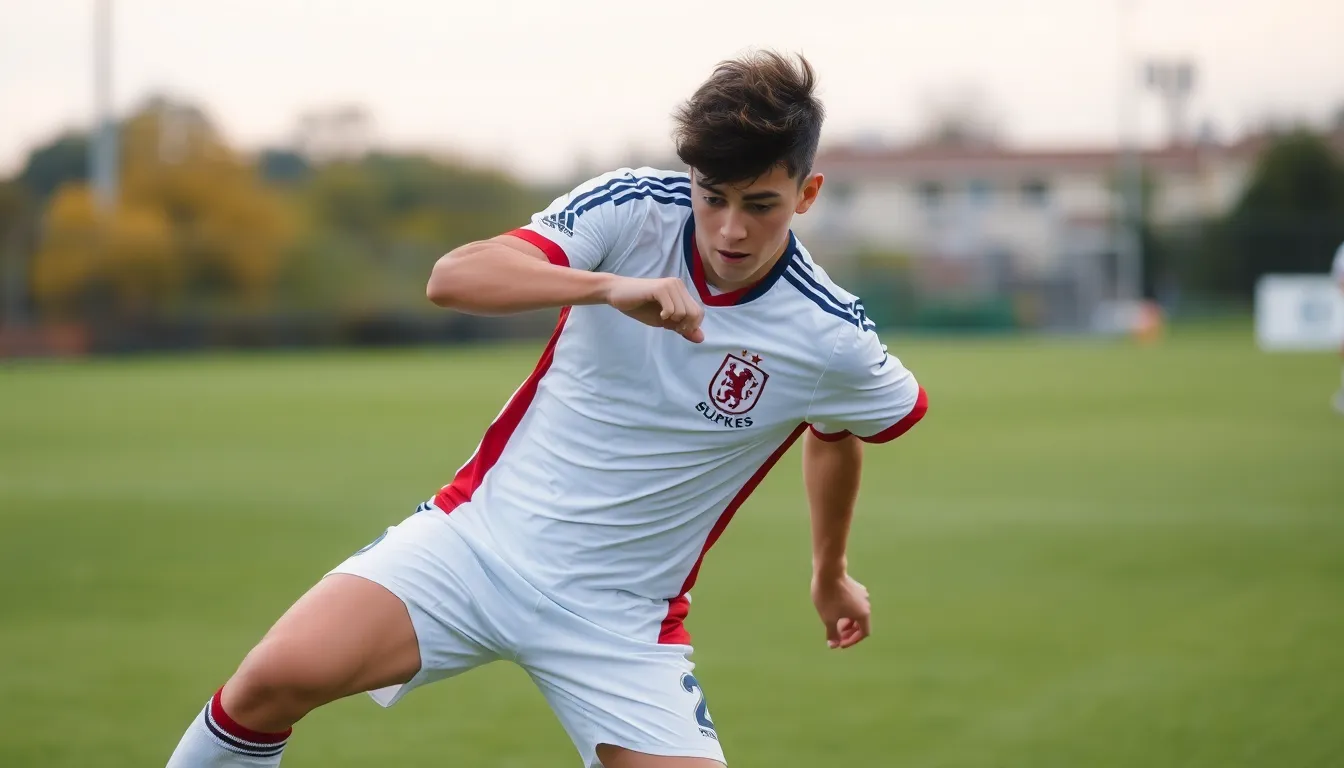Many athletes and active individuals often push their bodies to the limit, but what happens when an injury occurs without any immediate signs? The anterior cruciate ligament (ACL) is crucial for knee stability, and its tears can lead to significant setbacks. However, some people might wonder if it’s possible to sustain an ACL tear without even realizing it.
Injuries can manifest differently, and not everyone experiences the classic symptoms like pain or swelling. Sometimes, a person might feel a slight instability or discomfort but brush it off as a minor issue. Understanding the nuances of ACL injuries is essential for anyone engaged in sports or physical activities, as recognizing the signs can lead to timely treatment and recovery.
Table of Contents
ToggleOverview of ACL Injuries
ACL injuries, particularly tears, occur frequently among athletes and physically active individuals. The anterior cruciate ligament plays a crucial role in stabilizing the knee, connecting the thigh bone to the shin bone. Acute injuries often arise during sports involving sudden movements, such as basketball or soccer.
Symptoms of ACL injuries range from immediate and severe pain to subtle discomfort, making diagnosis challenging. Some individuals may experience minimal swelling or a feeling of instability without any significant pain. These symptoms can easily be overlooked, leading to further joint damage if not addressed.
Different classifications exist for ACL injuries. They include:
- Grade I Sprain: Mild damage to the ligament, with slight stretching but no tearing.
- Grade II Sprain: Partial tear of the ligament, resulting in some instability.
- Grade III Tear: Complete rupture of the ACL, often requiring surgical intervention.
Proper assessment and imaging, such as MRI scans, can help determine the extent of the injury. Early recognition of an ACL tear is essential for optimal recovery and return to activity.
Understanding the ACL

The anterior cruciate ligament (ACL) plays a crucial role in knee stability. It connects the thighbone to the shinbone and helps control forward movement and rotation of the knee joint.
Function of the ACL
The ACL stabilizes the knee during activities that involve pivoting, jumping, or sudden changes in direction. It prevents excessive forward movement of the tibia relative to the femur and limits rotational forces. This support is essential for athletes in sports like soccer, basketball, and football, where quick movements are common. When the ACL is intact, it helps maintain the overall function of the knee, enabling smooth and coordinated movement.
Common Causes of ACL Tears
Several factors contribute to ACL tears, most commonly occurring during high-impact activities.
- Sudden stops: Abruptly halting motion, particularly when landing from a jump, can strain the ligament.
- Pivoting: Twisting the knee while keeping the foot planted often results in a tear.
- Direct impact: A collision, such as a tackle in football or a fall, can compromise the ACL.
- Overextending: Hyperextension of the knee can stretch or rupture the ligament.
- Improper landing: Landing awkwardly after a jump can increase the risk of injury.
Awareness of these causes allows individuals to prepare and strengthen their knees, potentially preventing injuries.
Can You Tear Your ACL Without Knowing?
An ACL tear can occur without immediate awareness, particularly among active individuals. Recognizing this possibility enhances the chance for prompt treatment and recovery.
Symptoms of an Unnoticed ACL Tear
Symptoms of an unnoticed ACL tear might not align with the severe manifestations often expected. Individuals may experience:
- Mild Instability: The knee may feel slightly unstable during physical activities.
- Minor Discomfort: A dull ache or nagging sensation could develop, often dismissed as fatigue or strain.
- Swelling: Minimal or delayed swelling may occur, making it easy to overlook.
- Limited Range of Motion: Difficulty fully extending or bending the knee can signal an injury.
- Popping Sensation: Some may recall a slight popping sound during the injury but attribute it to other factors.
These subtle signs complicate the identification of an ACL injury, necessitating caution when engaging in sports.
Risk Factors for Undetected Injuries
Several risk factors contribute to the likelihood of an undetected ACL tear, including:
- Activity Level: High participation in sports involving pivoting and jumping increases the risk of injury.
- Anatomical Factors: Variations in knee structure can predispose individuals to unnoticed injuries.
- Muscle Weakness: Weakness in quadriceps or hamstrings can compromise knee stability.
- History of Previous Injuries: Past knee issues elevate the risk of re-injury, sometimes without clear symptoms.
- Improper Technique: Poor landing mechanics or sudden directional changes can lead to unnoticed tears.
Understanding these risk factors can help individuals take preventive measures and maintain knee health.
Diagnosis and Treatment
Accurate diagnosis and appropriate treatment are critical for individuals who sustain an ACL tear, even without immediate awareness of the injury. Engaging with healthcare professionals ensures proper assessment and facilitates recovery.
Importance of Professional Evaluation
Professional evaluation plays a vital role in diagnosing ACL injuries. Medical practitioners utilize physical examinations and imaging techniques, like MRIs, to assess the knee’s condition accurately. Clinical assessments can identify instability, swelling, and range of motion limitations indicative of an ACL tear. Relying solely on self-diagnosis may lead to improper care, delaying recovery and risk of further damage.
Treatment Options for ACL Tears
Treatment options vary based on the severity of the ACL injury.
- Grade I Sprains: Often managed with rest, ice, compression, and elevation (RICE), accompanied by physical therapy to strengthen the knee.
- Grade II Sprains: May also undergo RICE treatment, but extensive rehabilitation is often necessary. Active recovery programs focus on restoring functionality and stability.
- Grade III Tears: Typically require surgical intervention. Surgery often includes reconstruction to restore knee stability. Post-surgery, physical therapy becomes crucial for rehabilitation and recovery.
In addition to these standard treatments, individualized rehabilitation programs address specific needs, incorporating strength training, mobility exercises, and gradual return to activities. Engaging with physical therapists ensures tailored recovery approaches, improving outcomes for athletes and active individuals.
Prevention Strategies
Implementing effective prevention strategies can significantly reduce the risk of sustaining an ACL injury. Focus on the following approaches to maintain knee health:
- Strengthening Exercises: Engage in exercises that target the quadriceps, hamstrings, and calf muscles. Strong muscles support the knee joint, decreasing injury risk.
- Flexibility Training: Incorporate regular stretching routines to improve overall flexibility. Flexible muscles and joints can better absorb impact during physical activities.
- Balance and Proprioception Training: Practice balance exercises, such as single-leg stands or stability board exercises. Enhanced proprioception helps individuals maintain balance and stability during dynamic movements.
- Proper Technique: Learn and implement correct techniques for jumping, pivoting, and landing. Adopting proper forms minimizes stress on the knee.
- Footwear Choice: Wear appropriate shoes for the specific sport or activity. Proper footwear provides necessary support and traction, reducing the likelihood of awkward movements.
- Neuromuscular Training: Participate in programs that include plyometrics and agility drills. These programs enhance neuromuscular control, improving coordination during rapid movements.
- Warm-Up and Cool-Down Routines: Allocate time for proper warm-ups and cool-downs. Effective warm-ups prepare the body for exertion while cooling down assists in recovery.
- Avoiding Overtraining: Monitor activity levels and allow adequate recovery time. Overuse can lead to fatigue and increase the risk of injury.
- Education and Awareness: Stay informed about the mechanics of ACL injuries. Understanding potential risks and symptoms can promote proactive management and care.
By adopting these strategies, individuals can significantly lower their chances of experiencing an undetected ACL tear during athletic activities.
Recognizing the potential for an unnoticed ACL tear is vital for anyone engaged in sports or physical activities. Subtle signs like mild instability or slight discomfort can easily be overlooked, leading to delayed treatment and complications. By understanding the risks and symptoms associated with ACL injuries, individuals can take proactive steps to safeguard their knee health.
Early assessment and professional evaluation are crucial in determining the extent of an injury. With proper diagnosis and tailored rehabilitation, recovery can be optimized, allowing athletes to return to their activities safely. Emphasizing preventive measures through strength training and proper techniques can significantly reduce the likelihood of sustaining an undetected ACL tear. Staying informed and vigilant is key to maintaining an active lifestyle without the risk of injury.


